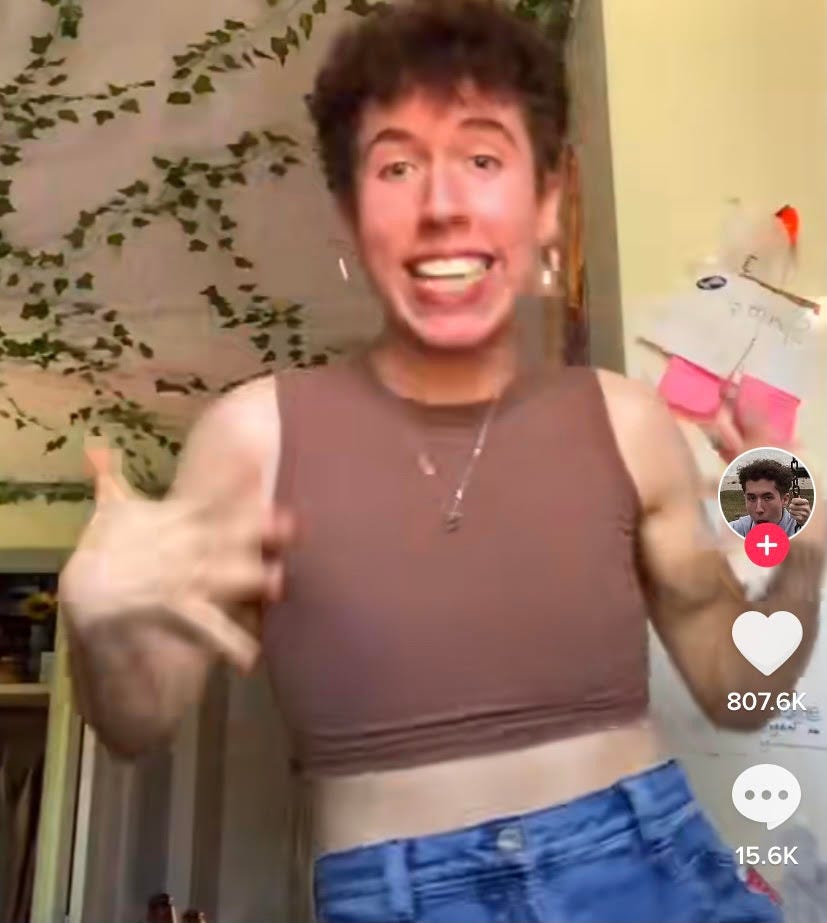The crushing isolation of TikTok fame
Why teens on the app are burning out almost as quickly as they blow up.
Welcome to Embedded, your essential guide to what’s good on the internet, published Monday through Friday by Kate Lindsay and Nick Catucci. “Get Embedded” on Twitter and Instagram. 🧩
I spent a lot of time on TikTok while at my parent’s house over the weekend and can say this for sure: The kids are not all right! —Kate

Looking down on younger generations, the conventional move is to point out how you had it so much harder. Like how as a millennial, I used to have to rewind VHS tapes or whatever. But when I watch Gen Z creators on TikTok deftly navigate the pressures of viral fame, I have the opposite thought: I could never, ever do that.
The problem is, many of these creators are discovering that they can’t sustain it, either. Over the weekend, 19-year-old Spencewuah announced that he was taking a break from TikTok after backlash from BTS fans who objected to him saying in a livestream that the band members' voices are "sexy" and that he "would want to be in bed with them." Recently, Spencewuah also suffered a very public break up and became the butt of jokes for his appearance and dance moves.
“Unfortunately I can only take so much hate,” he says through tears in his most recent video. “I can completely understand if some of you think I’m annoying but some of the things people are saying are just really hurtful.”
Spencer has nine million followers. Just three years ago, that kind of audience on a social media platform would have likely helped him hire a publicist, get media training, and build a professional support network to fall back on during the normal ups and downs of internet fame. Someone might take over reading his comments. An advisor might help him craft a response to a backlash. But TikTok has massively accelerated the audience growth curve for creators, and the resources available to them have not kept pace. Spencer’s nine million followers are a drop in the bucket compared to the 116 million following Charli D’Amelio, who's surrounded by a team paid for by the multiplatform business that her TikTok base has allowed her to launch. But that doesn't make his nine million followers any less real, or less difficult to manage.
To be clear, I have not interviewed Spencer and have no direct knowledge of who he does or doesn't work with. He is signed to the influencer talent agency Viral Nation, which, according to their website, helps him secure brand deals. But it very much appears, watching his videos, that he's largely navigating fame alone.
On a biological level, our brains are always filtering and suppressing unimportant stimuli that would needlessly overwhelm us. Social media overrides that filter. TikTok creators in particular are confronted with every conceivable opinion on who they are as a person. Of course they're buckling under that feedback.
Tons of midsize creators burn out or take breaks or disappear completely because they’re popular enough to amass giant followings but not to earn the kind of money it takes to insulate themselves from those followings. TikTok, of course, relies on these midsize creators. Lately platforms have been introducing new ways to help creators get paid, from distributing special funds to adding tipping features. There's little concern for the fact that none of those things guarantee a living wage for full-time content creation. But there is perhaps even less concern for how high-follower creators are supported when they inevitably encounter the toxic effects of scale. Platforms should be searching for solutions here, too, maybe offering publicity and even therapy services for users who hit a certain follower count (like how, for example, Substack is rolling out legal services for certain journalists on its platform). When there are a million or more pairs of eyeballs on someone, the question is not whether they will face a harassment or PR crisis, but when.



This might be old but still painfully relevant. If you guys are interested, we think things can be different for creators and their audiences... https://soundquakepodcasts.notion.site/We-Respect-Your-Attention-Initiative-Strategic-Overview-152cd78f5e8380b0805bf92e70374ff7?pvs=4